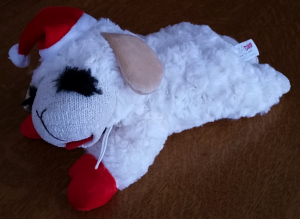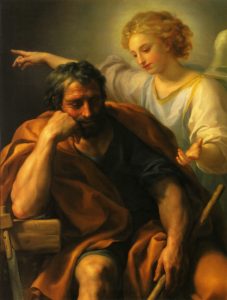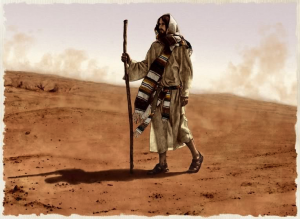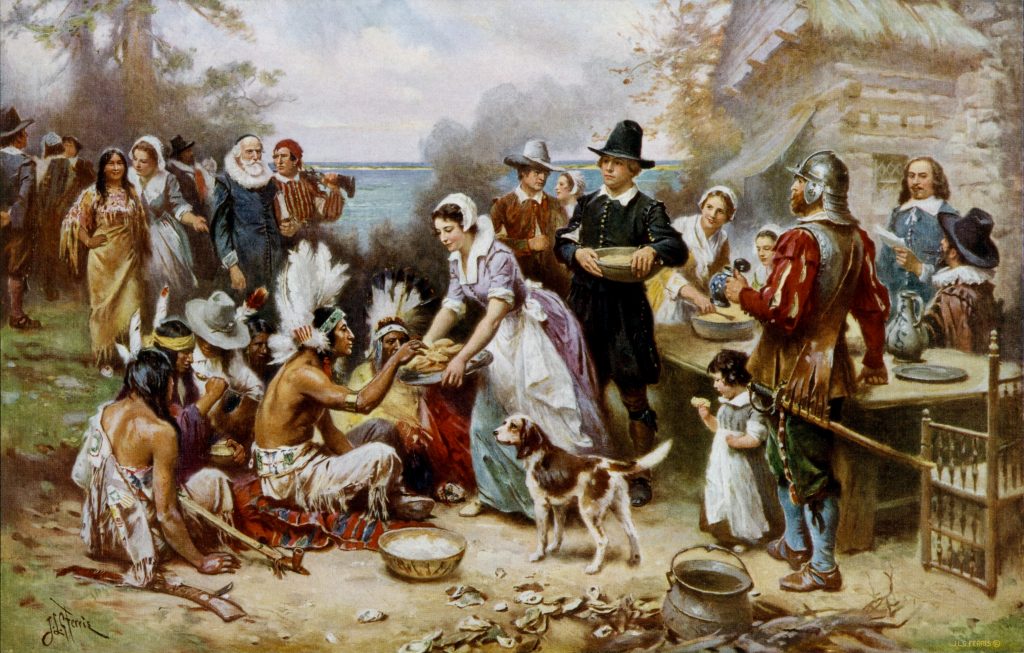====================
A homily offered by the Rev. Dr. C. Eric Funston on Christmas Eve, December 24, 2016, to the people of St. Paul’s Episcopal Church, Medina, Ohio, where Fr. Funston is rector.
(The lessons for the day are the second set of readings from the Revised Common Lectionary for Christmas in Year A: Isaiah 62:6-12; Psalm 97; Titus 3:4-7; and St. Luke 2:1-20. These lessons can be read at The Lectionary Page.)
====================
 I was in the pet supply aisle at Giant Eagle several days ago getting food for the Archbishop (that’s our black cocker spaniel, Lord Dudley of Ballycraic, the Archbishop Canine of Montville) when I found, right in front of the Beneful which is his favorite meal, a bin filled with these: dog toys in the likeness of a lamb dressed for Christmas. And not just any lamb! This is Lamb Chop, the somewhat snarky puppet introduced to the world by the late Shari Lewis in 1957.
I was in the pet supply aisle at Giant Eagle several days ago getting food for the Archbishop (that’s our black cocker spaniel, Lord Dudley of Ballycraic, the Archbishop Canine of Montville) when I found, right in front of the Beneful which is his favorite meal, a bin filled with these: dog toys in the likeness of a lamb dressed for Christmas. And not just any lamb! This is Lamb Chop, the somewhat snarky puppet introduced to the world by the late Shari Lewis in 1957.
As many of you know, this is something I do every year for this Christmas Eve sermon . . . find something to be a sort of “focus object” or trigger for our Christmas Eve meditations. Lamb Chop just seemed perfectly suited. This Christmas toy suggested four poetic associations to me: one is the title given Jesus by John the Baptizer, “the Lamb of God;” a second was a familiar nursery rhyme; the third was a romantic English poem; and the fourth, a song that Lamb Chop sang on the Shari Lewis television show, all of which can help us explore and understand the Incarnation of God in Christ Jesus.
So, the first thing that comes immediately to mind when we look at a lamb, whether Lamb Chop the puppet dressed up for Christmas or an actual lamb in the fields is the statement made by John the Baptizer in the Gospel of John: “[John] saw Jesus coming toward him and declared, ‘Here is the Lamb of God who takes away the sin of the world!’” (Jn 1:29) That seems an odd way to refer to a grown man, which Jesus was at the time.
The 20th-century bible scholar Joachim Jeremias suggested that a way to understand John’s statement is that he probably used the Aramaic word talya. Jeremias says that “lamb” (amnos in the Greek in which the gospel is written) is a translation of this Aramaic word, which can also be translated “boy,” “child” or “servant.” When Jesus was described as the talya of God, Aramaic speakers of the earliest church would have heard “child” of God, or “son” of God, or “servant” of God, or “lamb” of God. When that gospel story was written after Jesus’ Crucifixion and Resurrection, the image of the sacrificial lamb of the Hebrew tradition resonated with the author. (See America)
According to some widely accepted Christian theologies, the sacrifice of the cross is the very reason for which Jesus was born. I’m not entirely sure that’s the case; I suspect that God the Father would much rather have had Jesus followed than killed, but certainly God made use of Jesus’ Crucifixion and through it opened for us the way of salvation. In any event, some people think that the nursery rhyme Mary Had a Little Lamb, the second thing called to mind by our Christmas Lamb Chop, is about Jesus’ birth as the sacrificial lamb of God. You know the one:
Mary had a little lamb,
a little lamb, a little lamb
Mary had a little lamb,
Its fleece was white as snow.
It’s not really about the Virgin Mary and the birth of Jesus, however. It was written by Sarah Josepha Hale of Sterling, Massachusetts, in 1830, and is said to describe an actual event of a pet lamb visiting the local schoolhouse. (See Wikipedia) Nonetheless, we can learn something about our Christian faith by considering the lamb of that story.
The rhyme continues that the lamb followed Mary and “everywhere that Mary went the lamb was sure to go.” Although I don’t believe that the Son of God was born necessarily or primarily to be a sacrifice, I am sure he was born to be followed; I’m certain Christ came into Creation to teach us how to live life God’s Way. He is the Word given to us to lead us to salvation. The little lamb in the nursery rhyme trusted Mary and followed her, and that is what God wants us to do, to trust and follow the Son so that, with the Son, we may live the abundant life of the Kingdom of Heaven that God constantly offers us. This is what makes his birth so important to us and why we celebrate the Incarnation in our many special ways.
So, anyway, I picked up this Christmas Lamb Chop dog toy and the first thing I did was check to see where it was made. I’m very careful not to give the Archbishop, Lord Dudley, anything made overseas. (I’m sure you’ve heard about the toxins found in dog toys and treats made, for example, in China.) Doing so, I thought of another bit of lamb-inspired poetry, one by the English Romantic poet William Blake. You may know it; it is entitled simply The Lamb. It is, in essence, a question asked of a lamb by a child:
Little Lamb who made thee
Dost thou know who made thee
Gave thee life & bid thee feed.
By the stream & o’er the mead;
Gave thee clothing of delight,
Softest clothing wooly bright;
Gave thee such a tender voice,
Making all the vales rejoice!
Little Lamb who made thee
Dost thou know who made theeLittle Lamb I’ll tell thee,
Little Lamb I’ll tell thee!
He is called by thy name,
For he calls himself a Lamb:
He is meek & he is mild,
He became a little child:
I a child & thou a lamb,
We are called by his name.
Little Lamb God bless thee.
Little Lamb God bless thee.
Blake’s poem is a deceptively naive child’s song. Beginning with a descriptive, pastoral stanza, it moves quickly to focus on the abstract spiritual matter of Creation. The child’s guileless but profound question – “Who made thee?” – echoes the deep and timeless question that all human beings have about our origin. It reminds us of the opening lines of John’s Gospel with its abstract account of the Incarnation:
In the beginning was the Word,
and the Word was with God,
and the Word was God.
He was in the beginning with God.
All things came into being through him,
and without him not one thing came into being.
And the Word became flesh and lived among us,
and we have seen his glory,
the glory as of a father’s only son,
full of grace and truth
(Jn 1:1-3,14)
In Blake’s poem, this profound truth is presented with the naiveté of a child’s puzzle revealing the child’s confidence in a simple and innocent Christian faith. Our Christmas Lamb Chop reminds us that “whoever does not receive the kingdom of God as a little child will never enter it.” (Mk 10:15) Christmas is a time for us all to experience once again our childlike wonder at the simple beauty that is the Incarnation.
But our Christmas dog toy can trick us! We have to beware of oversimplifying the Incarnation. I read recently about “a Christmas display . . . at [a shopping] mall: giant plush bears robed as Mary and Joseph, beaming at a swaddled Baby Jesus bear in the manger.” Theologian Fredrica Mathewes-Green, who described this display, said of it,
If there was once grand mystery around the Incarnation, it has long since dispersed. Three jolly bears now convey everything we know or expect to know. It is a scene plump with stupidity. Jesus as a cookie. God as a pet. (Patheos)
This, she says, “is very bad news,” because “a circle of cuddly bears is useless at helping us deal with pain. It cannot help us grasp searing heartbreak.” Neither can a puppet, even a nice Christmas Lamb Chop puppet, but it can serve as a warning and a reminder!
Tracy Dugger, an Episcopal priest in Florida, has written about what she calls “meat puppet theology,”
. . . the idea that our bodies are machines simply being utilized and driven around by our minds. The mind/soul is the control, and the body is subservient. This way of thinking about the mind/body connection is wrong, and leads us into some pretty wrongheaded [ideas]. (The Young Anglican)
“The ultimate example of why bodies are important,” she says, is the simple fact that “JESUS HAD ONE! Jesus was Incarnate. Not only was Jesus, Son of God, begotten by the Holy Spirit, He was knit together in Mary’s womb. Jesus was a man of flesh and blood, as well as God from God, light from light.”
Mathewes-Green puts it this way:
God came down in a suit of skin and bones, and walked and talked and offended people, and finally they tortured him to death. And by that death he destroyed death; he rescued us and gave life everlasting and every other good thing. Into this universe crammed with pain we say that God came down, because he loves us with the kind of love that we can only understand by thinking of how a parent loves. (Patheos)
In an Advent meditation offered earlier this week, Brother Mark Brown of the Society of St. John the Evangelist reminded us that parental love and every act of kindness is an action of the body. He wrote: “The Spirit of God animates us, but it all happens in the flesh: every deed of kindness, every act of generosity, every word of encouragement happens in the flesh. Every embodiment of Christ’s grace or truth or love happens in the flesh – or it doesn’t happen.”
Tonight, tomorrow, as we celebrate the Word becoming flesh, we celebrate that bodily parental love . . . the love of mother and father tending their newborn child; the eternal love of the Father sending the Son to redeem us. As we celebrate the birth of Jesus to Mary, we celebrate also the truth we recite every Sunday (and this evening) in the Nicene Creed:
We believe in one Lord, Jesus Christ,
the only Son of God,
eternally begotten of the Father . . .
(BCP 1979, Pg 358)
Jesus was born in Bethlehem once for all time; the Son of God is eternally begotten of the Father and both, as we say in the Creed, for our salvation.
 Which brings me to the fourth and last bit of poetry our Christmas Lamb Chop brought to mind, which is a song Lamb Chop and Shari Lewis taught their viewers during the 1992 season of the PBS show Lamb Chop’s Play-Along. Some of you may know the song and can sing along:
Which brings me to the fourth and last bit of poetry our Christmas Lamb Chop brought to mind, which is a song Lamb Chop and Shari Lewis taught their viewers during the 1992 season of the PBS show Lamb Chop’s Play-Along. Some of you may know the song and can sing along:
This is the song that doesn’t end
Yes, it goes on and on my friends
Some people started singing it
Not knowing what it was
And they’ll continue singing it
Forever just because . . .
(Repeat)
There is a contemporary Christmas carol by Canadian folksinger Bruce Cockburn entitled The Cry of a Tiny Babe which expresses the timelessness and eternality of Jesus’ birth in its refrain:
Like a stone on the surface of a still river
Driving the ripples on forever
Redemption rips through the surface of time
In the cry of a tiny babe
(Cry of a Tiny Baby YouTube)
In the last book of the bible, St. John of Patmos recorded his many visions, the last of which was of the Lamb:
I saw no temple in the city, for its temple is the Lord God the Almighty and the Lamb. And the city has no need of sun or moon to shine on it, for the glory of God is its light, and its lamp is the Lamb. The nations will walk by its light, and the kings of the earth will bring their glory into it. Its gates will never be shut by day – and there will be no night there. People will bring into it the glory and the honor of the nations. * * * Nothing accursed will be found there any more. But the throne of God and of the Lamb will be in it, and his servants will worship him; they will see his face, and his name will be on their foreheads. And there will be no more night; they need no light of lamp or sun, for the Lord God will be their light, and they will reign for ever and ever. (Rev 21:22-26,22:3-5)
Our Christmas Lamb Chop reminds us that salvation is a song that doesn’t end, that “redemption rips through the surface of time,” and that our Christmas carols are but a faint echo of the multitude’s song of worship before the throne of the Lamb for ever and ever. Mary had a little lamb, the Lamb of God, the Word made flesh through Whom all things were made, Who came down for our salvation, and Whose song of redemption doesn’t end. Yes, it goes on and on, my friends.
Merry Christmas!
====================
Father Funston is the rector of St. Paul’s Episcopal Church, Medina, Ohio.
 In these few verses, Matthew opens up for us the complexity of Joseph as a human being. He hints at, and we can imagine, Joseph’s distress, his sense of betrayal, his disappointment, and all the other emotions he must have experienced. We can imagine also the fear and hurt that Mary probably would have felt as she and her betrothed sorted out the complications caused by the divine intrusion into their relationship.
In these few verses, Matthew opens up for us the complexity of Joseph as a human being. He hints at, and we can imagine, Joseph’s distress, his sense of betrayal, his disappointment, and all the other emotions he must have experienced. We can imagine also the fear and hurt that Mary probably would have felt as she and her betrothed sorted out the complications caused by the divine intrusion into their relationship. Most of the time when we hear this story of John’s disciples coming to Jesus we focus on John’s question – “Are you the one who is to come, or are we to wait for another?” (Mt 11:3) – and on Jesus’ answer to it which is neither a “yes” nor a “no” but a pointing to the evidence – “the blind receive their sight, the lame walk, the lepers are cleansed, the deaf hear, the dead are raised, and the poor have good news brought to them” (Mt 11:5).
Most of the time when we hear this story of John’s disciples coming to Jesus we focus on John’s question – “Are you the one who is to come, or are we to wait for another?” (Mt 11:3) – and on Jesus’ answer to it which is neither a “yes” nor a “no” but a pointing to the evidence – “the blind receive their sight, the lame walk, the lepers are cleansed, the deaf hear, the dead are raised, and the poor have good news brought to them” (Mt 11:5).
 A few years ago I read an essay about the trials and tribulations of relocation, particularly from region to region within our country. In it the author made the comment that when relocating to the South, there were two invariably asked questions of the newcomer: “Who are your people?” and “Where do you go to church?” These, he said, are quintessentially Southern inquiries which serve to position the interrogated in a place’s social network and milieu. The assumptions, of course, are that no one would relocate to a town where they did not have “people” (i.e., family members) and that everyone goes to church somewhere.
A few years ago I read an essay about the trials and tribulations of relocation, particularly from region to region within our country. In it the author made the comment that when relocating to the South, there were two invariably asked questions of the newcomer: “Who are your people?” and “Where do you go to church?” These, he said, are quintessentially Southern inquiries which serve to position the interrogated in a place’s social network and milieu. The assumptions, of course, are that no one would relocate to a town where they did not have “people” (i.e., family members) and that everyone goes to church somewhere.  “Two will be in the field; one will be taken and one will be left. Two women will be grinding meal together; one will be taken and one will be left. Keep awake therefore, for you do not know on what day your Lord is coming.” (Matt 24:40-42) You probably have friends who have told you these verses from Matthew’s Gospel describe something called “the Rapture.” You may have read the Left Behind books or seen the movies. So you may think you have a handle on what these verses mean and why they are offered to us as we begin our Advent preparation to celebrate the anniversary of Christ’s Incarnation and to look forward to his return, his “Second Coming.”
“Two will be in the field; one will be taken and one will be left. Two women will be grinding meal together; one will be taken and one will be left. Keep awake therefore, for you do not know on what day your Lord is coming.” (Matt 24:40-42) You probably have friends who have told you these verses from Matthew’s Gospel describe something called “the Rapture.” You may have read the Left Behind books or seen the movies. So you may think you have a handle on what these verses mean and why they are offered to us as we begin our Advent preparation to celebrate the anniversary of Christ’s Incarnation and to look forward to his return, his “Second Coming.”
 It’s the last Sunday of the Christian year, sort of a New Year’s Eve for the church. We call it “the Feast of Christ the King” and we celebrate it by remembering his enthronement. As Pope Francis reminded the faithful in his Palm Sunday homily a few years ago, “It is precisely here that his kingship shines forth in godly fashion: his royal throne is the wood of the Cross!” (
It’s the last Sunday of the Christian year, sort of a New Year’s Eve for the church. We call it “the Feast of Christ the King” and we celebrate it by remembering his enthronement. As Pope Francis reminded the faithful in his Palm Sunday homily a few years ago, “It is precisely here that his kingship shines forth in godly fashion: his royal throne is the wood of the Cross!” ( Good evening! For those who don’t know me, I am Eric Funston, a priest of the Episcopal Church and rector of St. Paul’s Parish in Medina, Ohio. For those of you who don’t know why I’m preaching here tonight . . . I wish I could tell you! Usually these ordination or installation homily gigs go to someone with whom the new clergy person has had a, shall we say, formative relationship: a former pastor, a seminary professor or a ministry supervisor, an elder minister under whom the new pastor served a curacy, someone responsible for the priestly formation of the new rector. But that doesn’t describe me . . . I am not responsible for George Baum ~ and that is very probably a good thing!
Good evening! For those who don’t know me, I am Eric Funston, a priest of the Episcopal Church and rector of St. Paul’s Parish in Medina, Ohio. For those of you who don’t know why I’m preaching here tonight . . . I wish I could tell you! Usually these ordination or installation homily gigs go to someone with whom the new clergy person has had a, shall we say, formative relationship: a former pastor, a seminary professor or a ministry supervisor, an elder minister under whom the new pastor served a curacy, someone responsible for the priestly formation of the new rector. But that doesn’t describe me . . . I am not responsible for George Baum ~ and that is very probably a good thing! 

